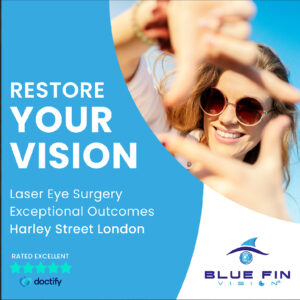Say Goodbye to Glasses: How Refractive Lens Exchange Changes Lives
Refractive lens exchange (RLE) has emerged as a transformative solution for individuals seeking to reduce their reliance on glasses and contact lenses, especially as they grow older and experience changes in their vision. This procedure offers a more Refractive lens exchange permanent and comprehensive solution compared to traditional corrective methods. With the ability to address both near and far vision problems, RLE has gained traction among those over the age of 40, who often face the onset of presbyopia, a condition that makes it increasingly difficult to focus on close-up objects.

Unlike LASIK, which reshapes the cornea to alter how light enters the eye, RLE focuses on the eye’s natural lens, which is replaced with an artificial intraocular lens (IOL). The removal of the eye’s lens and its replacement with an IOL can correct refractive errors such as myopia (nearsightedness), hyperopia (farsightedness), and astigmatism, as well as presbyopia. The procedure is especially beneficial for those who have developed presbyopia and require glasses for both distance and reading. By choosing RLE, many patients can achieve clear vision without the need for multiple pairs of glasses or reading glasses.
One of the key advantages of RLE is its versatility in offering various types of intraocular lenses. Monofocal IOLs, which provide clear vision at one distance, are a popular choice for patients looking to correct either near or far vision. However, for those who wish to be free of glasses altogether, multifocal or accommodating IOLs can provide excellent vision at multiple distances, including near, intermediate, and far. These advanced lenses mimic the eye’s natural focusing ability, allowing for a broader range of vision without the need for additional corrective eyewear. Patients who opt for these lenses often find that their overall quality of life improves, as they can engage in daily activities such as reading, driving, and working on computers without struggling with vision-related issues.
RLE also offers long-term benefits compared to other corrective treatments. While LASIK may require touch-up procedures over time, RLE’s implantation of an IOL is typically permanent, meaning patients don’t need to worry about future changes in their prescription. Moreover, the procedure eliminates the risk of developing cataracts, as the natural lens, which is prone to clouding with age, has already been replaced.
However, RLE is not without its considerations. Though it is generally safe and effective, not everyone is an ideal candidate. Patients must be in good overall health and have no underlying eye conditions, such as glaucoma or retinal disease, that could interfere with the healing process. The decision to undergo RLE should be made in consultation with a skilled ophthalmologist who can assess the patient’s vision needs and recommend the most appropriate IOL type based on their lifestyle and visual demands.
For most patients, the recovery from RLE is relatively quick and uncomplicated. The procedure is typically performed on an outpatient basis, and patients can often resume their daily activities within a few days. However, it’s essential to follow post-operative care instructions and attend follow-up appointments to ensure optimal healing and vision.
In conclusion, refractive lens exchange offers a highly effective solution for those seeking to improve their vision and reduce dependence on glasses or contact lenses. It provides long-lasting results, especially for individuals experiencing age-related vision changes such as presbyopia. With the variety of IOL options available, patients can choose the lens that best suits their needs, leading to improved quality of life and enhanced vision. As with any surgical procedure, careful consideration and consultation with an experienced eye care professional are essential to achieving the best possible outcome.
